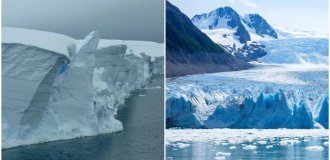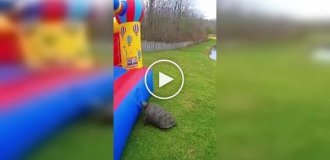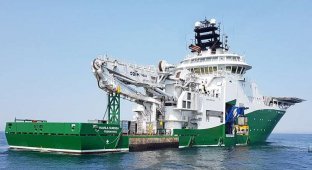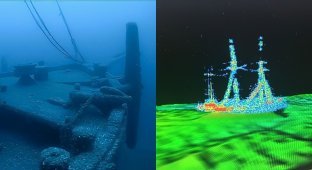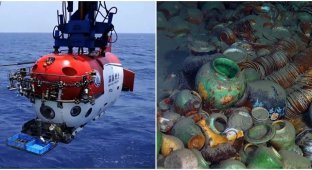In Lake Michigan found a sunken schooner in excellent condition (8 photos + 1 video)
Historians Brandon Baio and Bob Jack, who specialize in the search for sunken ships, determined the place of the surviving documents shipwreck of the trading schooner "Trinidad" and discovered it with the help of side-scan sonar. 156 year old schooner very well preserved: it was even called the "time capsule". 
July 15, 2023 Wisconsin maritime historians Brandon Baio and Bob Jack, as a result of targeted searches, discovered the intact remains of the 156-year-old schooner Trinidad at a depth of about 90 meters off the coast of Algoma, Wisconsin. Baio and Jack were looking for the lost ship over the past two years using sonar lateral survey, whose work is based on the principle of echolocation.
Schooner "Trinidad" 
Trinidad interested Baio almost twenty years ago, when he created a database of all known ships lost in waters of Wisconsin. Historic schooner "meet all the requirements" as candidate for discovery. Her team described in detail the place where she sank, and she rather slowly sank to the depth, therefore, probably intact. In addition, she was quite close to port city, which provided convenient access, and there was no record of her loss known even to the local community. In fact, no one has ever looked for it.
Brandon Baio, Bob Jack and Tom Crossmon 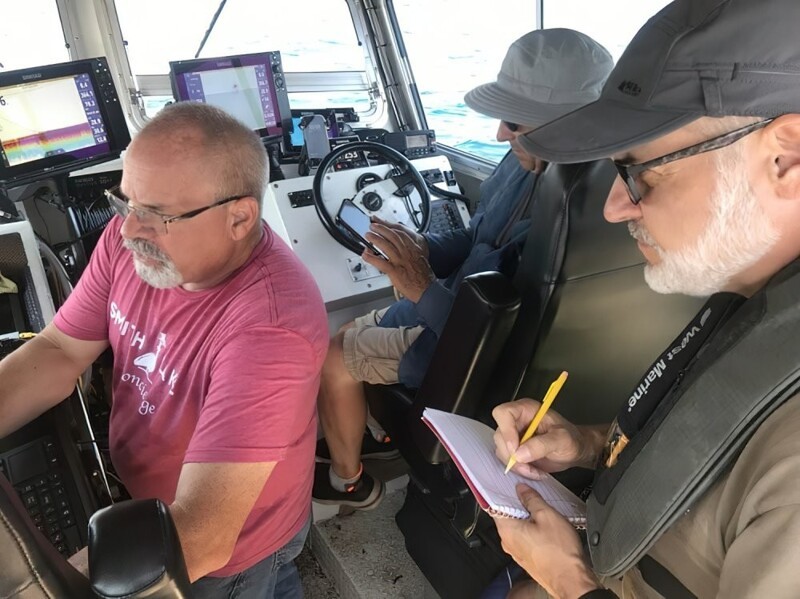
Baio collected dozens of historical news articles from the 1800s years about the construction, launching, "career" and the death of Trinidad, and also found the original customs registration documents in National Archives. Baio studied the sea routes shown on historical nautical charts of the area, and compared them with reports the surviving crew of the Trinidad to build a search grid. He also discovered a previously unknown historical image of a vessel, dated 1873.
The schooner Trinidad was built in 1867 on Grand Island, NY by shipbuilder William Keefe for Oswego John Keller and Aaron B. Merriam - specifically for the grain trade from Milwaukee and Chicago. She was 140 feet (42.7 m) long, had two masts and unusually large and well-equipped rooms for their time. The schooners of her design were known as "channel" because they were designed to be able to pass through the channel Welland connecting Lakes Erie and Ontario.
Trinidad Deck 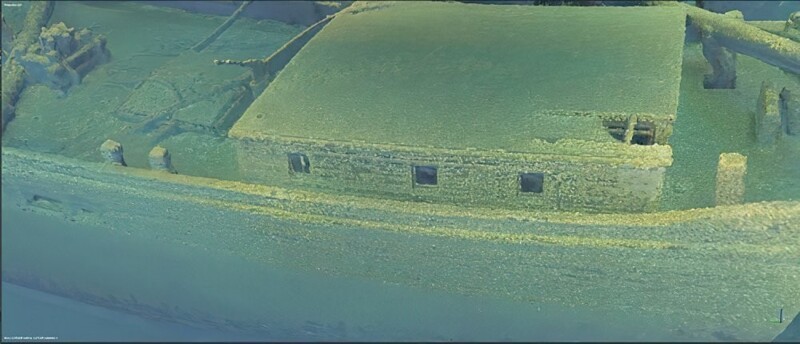
The main purpose of the Trinidad was to transport coal or iron from Oswego, New York, then the eastern terminus lakes, in Chicago and Milwaukee on the western lakes. From there she returned "prairie gold", wheat from Wisconsin, which was then shipped the Erie or Oswego Canal to the big cities of the east coast. Trade grain was extremely profitable, and "Trinidad" made a fortune for their owners, having made hundreds of flights during their career.
Unfortunately, the owners of Trinidad did not invest much in maintenance of the ship, and his career was relatively short for that era. Insurance records show that in 1867 the ship cost 22,000 dollars, but by 1878 its value had fallen by half. Corps started leak, and the captain was almost killed by a block that fell from the decayed rigging. TO In 1879, the schooner was already unsuitable for transporting precious grain cargo, and the owners decided to sell it.
The beginning of the end came in May 1880 when Trinidad signed a contract for the delivery of coal to the mines of Silver Islet (Silver Island) on Lake Superior. It was unusual for the old ship's path, and on the approach to the pier, it stumbled upon a reef, tearing off ten feet of its bottom. The schooner was rescued and taken to the Lower Lakes, where she hastily repaired and returned to service. Then her owners sent her with the last shipment of coal to Milwaukee in November 1880, but the captain schooner John Higgins, realizing that she was in poor condition, decided to leave her to winter quarters in Port Huron, halfway to her destination.
Trinidad Bell 
The following spring, Higgins and eight members of the team went from Port Huron over heavy spring ice. May 5 when passing through Strait of Mackinac, the schooner needed the help of a tugboat (to break through thick ice). By May 10, the Trinidad crossed the shipping channel in the bay Sturgeon and headed down the shore of Lake Michigan totowards Milwaukee with moderate waves.
Prior to this, for several years, the ship had already been slowly leaked, so when the captain's mate informed the captain about the rise water in the hold, this did not cause much concern. The crew began to pump out water pumps, but the water continued to rise. Trinidad was equipped additional pumps, so Captain Higgins kept the course. Then, in 4:45 a.m. on Wednesday, May 11, the ship suddenly lists forward and begins sink quickly. Captain Higgins and the crew did not have time to collect their personal things and immediately launched a small skiff from the stern.
The ship sank so quickly that the ship's mascot, a large the Newfoundland dog, sleeping by the stove in the cabin, did not have time to escape. It was the only one who died. Most of the men didn't have coats and raincoats and they quickly froze. Captain Higgins ordered the crew to head for lights of Anapi (modern Algoma, Wisconsin), located on nearly ten miles (16 km) away. The men fought the waves for almost 8 hours and reached the shore around 14:00. Residents of Anapi helped the frozen sailors, gave them food and dry clothes. Then the crew of the lost schooner picked up by another ship and delivered to Chicago.
Let's look into the deckhouse 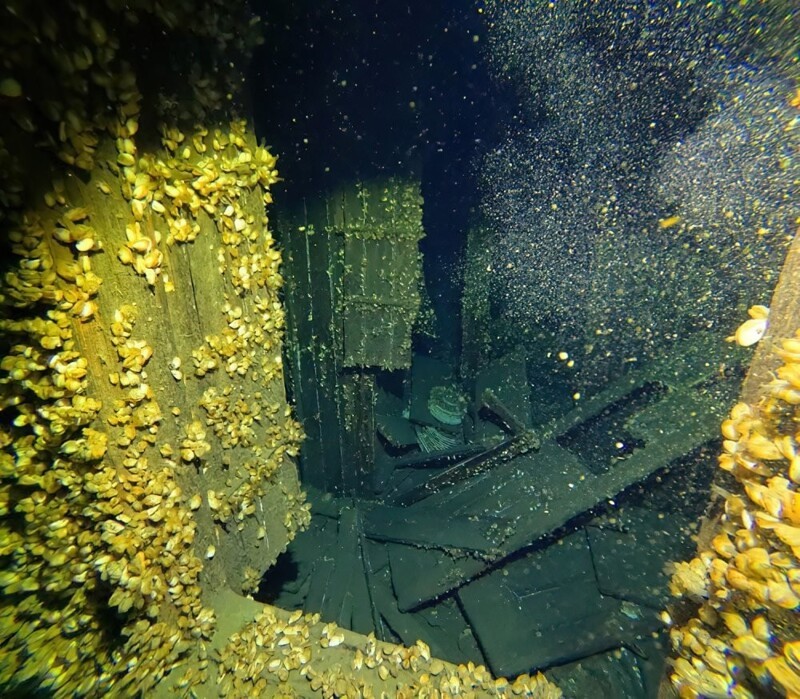
There Captain Higgins told his story to the Marines. reporters. Not wanting to blame the ship's owners, Higgins suggested that the schooner's hull could have been cut by ice in the Strait of Mackinac. However, everything says that by the time of her last voyage the ship was nothing more than a floating coffin. Most ships of the era The Trinidad served twice as long as he did, but they were regularly caulked, replaced rotten wood and rigging. Insurance records show that "Trinidad" did not receive normal service and, according to In fact, his fate was sealed by this.
With this story in hand, Baio and Jack set out to find resting place of Trinidad. A pair of experienced seekers designed a special tug that allowed them to place a low-frequency sonar deep below the surface of the water, rather than mounting it on boat. This allowed them to create a three-dimensional bottom map almost 1/3 wide. miles for each pass, which made it possible to quite quickly draw up map of a large area of the lake bed.
When Baio and Jack first photographed the crash site, it looked like just a fuzzy spot on the screen, almost imperceptible. When they returned for the second pass at a slower speed and with higher resolution, they clearly saw that this was the place shipwreck. It was located almost exactly at the point indicated by captain of the Trinidad in 1881, but Baio and Jack, active members Wisconsin Association of Underwater Archaeology, knew better not to announce your discovery immediately.
Steering wheel of Trinidad 
Finding a previously unknown historical site is a serious responsibility. Nearly all abandoned shipwrecks in state waters Wisconsin is administered by the state as an archaeological site. However, in the past, sunken ships were often plundered in search of artifacts or were damaged by diving boats that hooked their anchors fragile remains. As a result, Baio and Jack turned to the Naval Archeology of the Wisconsin State Historical Society and reported their find so that it could be documented before any impact or violation.
Tamara Thomsen, state state underwater archaeologist Wisconsin, organized a site survey by Crossmon Consulting using a commercial remote control controlled (ROV) with forward sonar. This made it possible to measure ship's hull with the utmost precision. The body dimensions were then compared with historical dimensions indicated in the original registration documents of the ship at customs, and the find was officially confirmed.
The ship really turned out to be in surprisingly good condition, his cabin was still in place, and there were things crew, utensils, anchors, a bell and many other artifacts untouched by day of the death of the schooner in May 1881. Thomsen is back with diver Zach Witrocom to photographically document artifacts in situ crash and build a 3D photogrammetric model of the crash.
Whitrock did a 3 hour dive and made 3600 high resolution images. The images were then processed in 3D rotating model. It can be used to "walk" on the deck of the ship using a virtual headset reality.
Zach Whitrock descends on the Trinidad 
Plans for the future Trinidada" includes the introduction of the remains schooners on the National Register of Historic Places. Baio will work with State Historical Society on the preparation of the nomination, which will increase the visibility of this place as an important part of the public history of Algoma and its environs. As soon as this place is included in National registry and carefully documented, will be made public its specific location.

